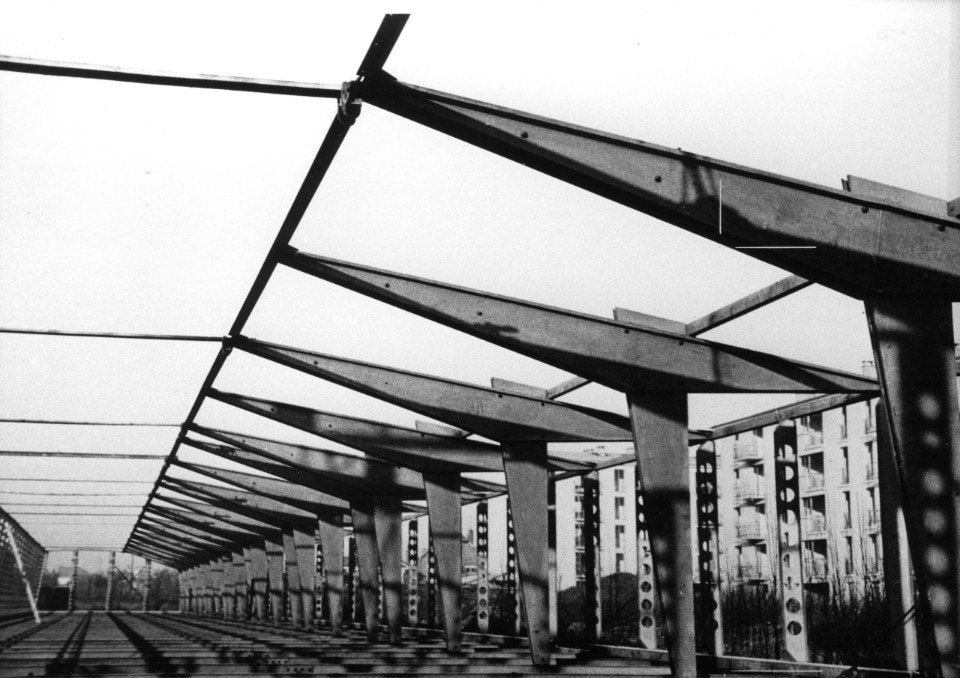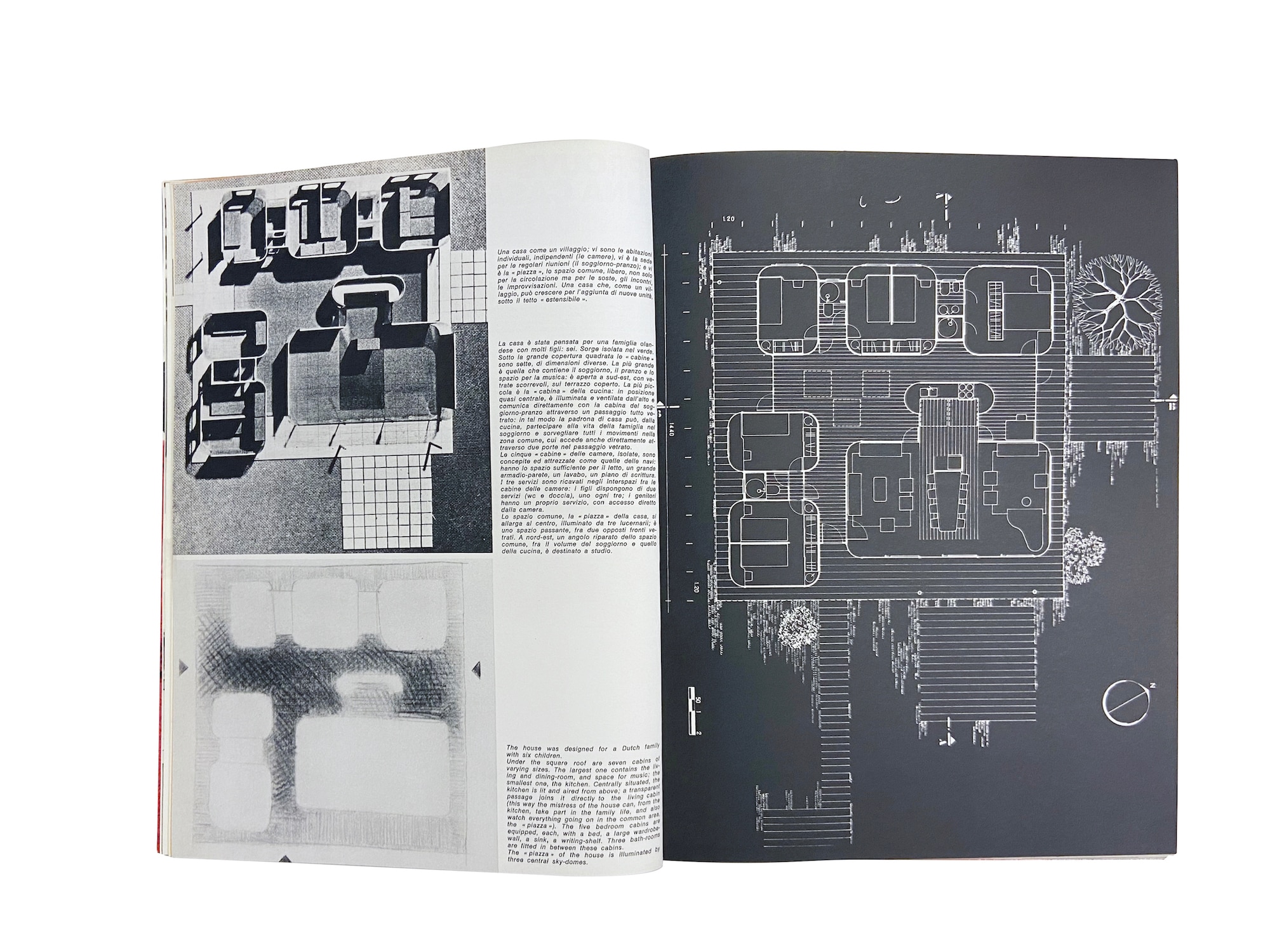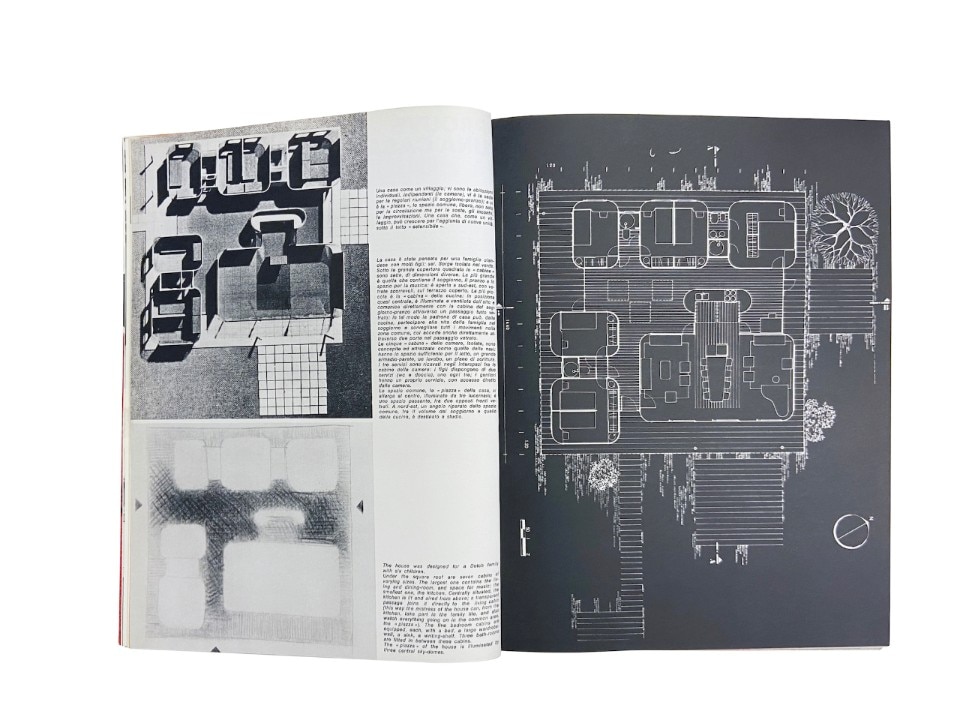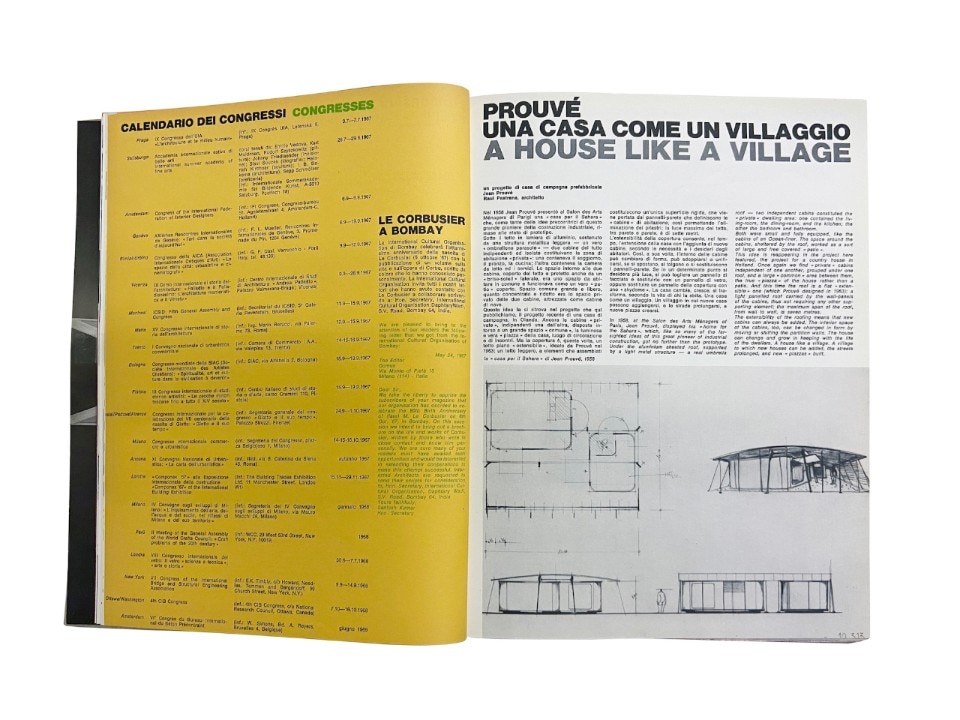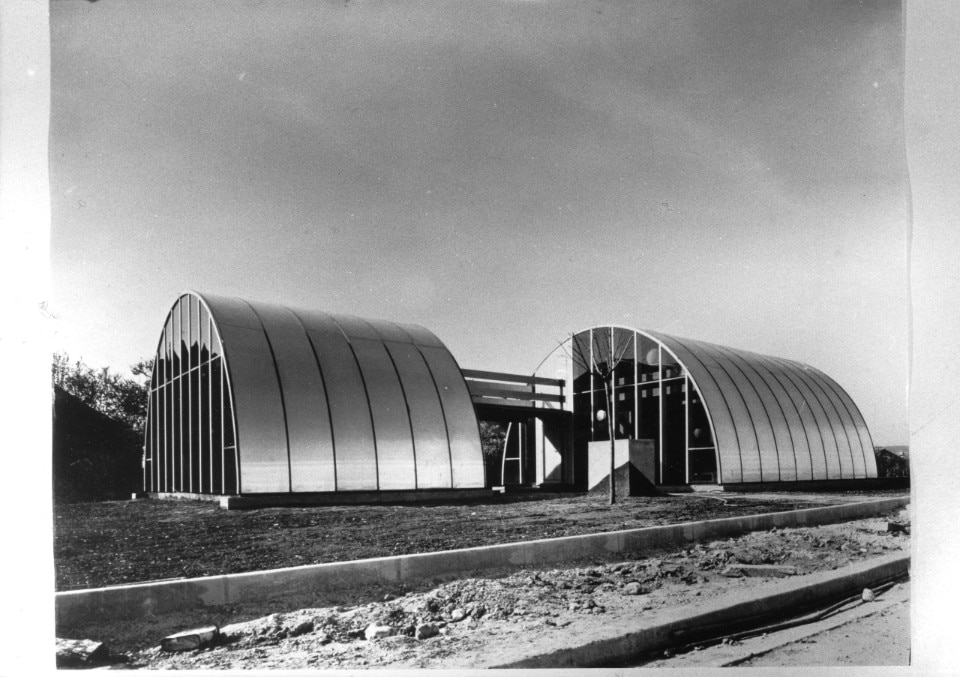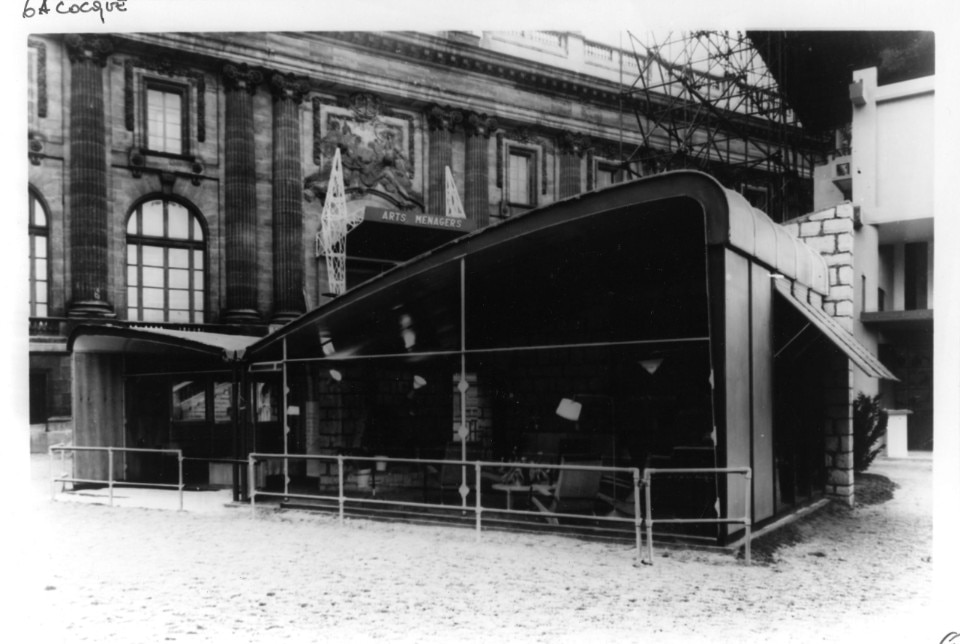This article was originally published on Domus 1046, May issue.
Jean Prouvé’s debut in Domus magazine, subtitled by Ernesto Nathan Rogers the “House of Man”, dates from 1946 (Domus 210, June 1946). The house proposed by the “finest metalsmith” – and whose talents Le Corbusier had sought out in the same period for the interiors of the cells in his Unité d’Habitation in Marseille – was one for every man.
Italy had just come through the war and was drawn to the research into prefabricated houses that Prouvé had centred around the definition of its metal structure. Intrigued by lightness, he dismantled the formal rhetoric of architecture and prioritised the versatility of technology as a means to satisfy its social vocation from a standpoint that was both pragmatic and optimal. Reducing architecture to assembly (which his student Renzo Piano later defined as the “piece by piece” approach) may have seemed to be limiting it to the sphere of carpentry but the drive behind his self-effacing and unpretentious research stemmed rather from the tradition of the French Enlightenment, so memorably expressed in Claude-Nicolas Ledoux’s celebrated image of L’abri du pauvre.
The diagrams accompanying the illustrations of the house published in Domus – a skeletal structure formed by directly combining columns and roof – convey the same poetic simplicity as evoked by Ledoux’s portrayal. Prouvé turned the leafy tree protecting the naked man before the gaze of the gods into a metal column supporting a roof so that the construction portante fully identified with the construction couvrante.
It was the shelter concept that Prouvé had in common with Richard Buckminster Fuller’s American experiments and, to some degree, with Mies van der Rohe’s obsession with the syntagma of the “roof”. However, while Mies monumentalised the column/roof schema, Prouvé democratised it, turning it into everyday practice. He lowered the tone and extended its reach to all and the assembly site became the testing ground for potential mass application. Fuller was equally democratic in the proposal of his DIY shelter which, not surprisingly, was adopted in the 1960s by a generation of nomadic hippies seeking their own personal paradise. Prouvé believed in the precision of engineering – less that of calculations and more that of static intuition and a good knowledge of materials, “tin” in his case.
Six years later, issue 251 (1950) of Domus returned to the subject, publishing the Maison Prouvé (with Henri Prouvé) presented at the Salon des arts ménagers in Paris and summarising its features (construction time: five days; weight: two tons 800 kg; floor space: 64 square metres; two bedrooms, living and dining room, kitchen and bathroom in one prefabricated block; custom-made furnishings) but specified that, despite being built with standard elements, it was not a mass-produced house because the single components could be arranged differently to create several potential house types. Once again, much prominence was given to a diagram of the assembly phases with an almost military-like diagram/analogical tutorial in which every vignette illustrated a phase and a construction act. The founding action – laying the first stone – featured the doorway mounted on the platform base. The doorway was the cornerstone and possessed the sacredness of the hearth described by Gottfried Semper as one of the “four elements” of architecture and declined by Prouvé in the slenderness of the industrial section.
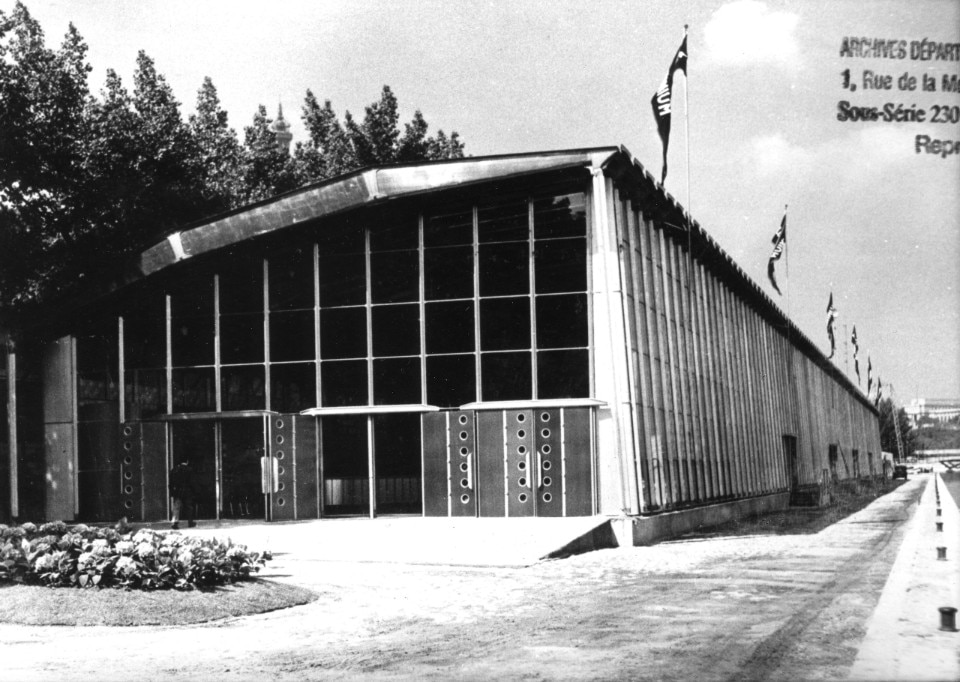
At least two decades passed before Prouvé reappeared in Domus (452, July 1967), this time with a project for a country house in Holland that, in turn, echoed the better-known 1958 experiment of the Sahara House. The idea was basic and effective: a sheet-aluminium roof resting on a lightweight structure described as an “umbrella-parasol”.
The roof triumphed as the element defining the space it protected; below this was the dwelling, consisting in three “cabins” (one containing the living/dining room; one with the kitchen; and the last with the bedrooms and bathrooms) arranged in such a way as to generate a sheltered connecting space, like a square or shady patio. It was the house become village, a rigid tent that condensed the essence of domestic space, with no frills but all comforts. It was the incipit of a street that, once again, was launched by Piano in his proposal of an “evolutionary house”, built in Bastia Umbria in 1978 and subsequently replicated in other situations.
Opening image: the frame of a temporary school in Villejuif, Paris (1957).
Fulvio Irace is a full professor of the history of architecture at Milan Polytechnic. A columnist for Il Sole 24 Ore, he has written monographs on Italy’s leading architectural figures of the 20th century. He has curated several exhibitions, including “Gio Ponti. Loving Architecture”, MAXXI, Rome.


